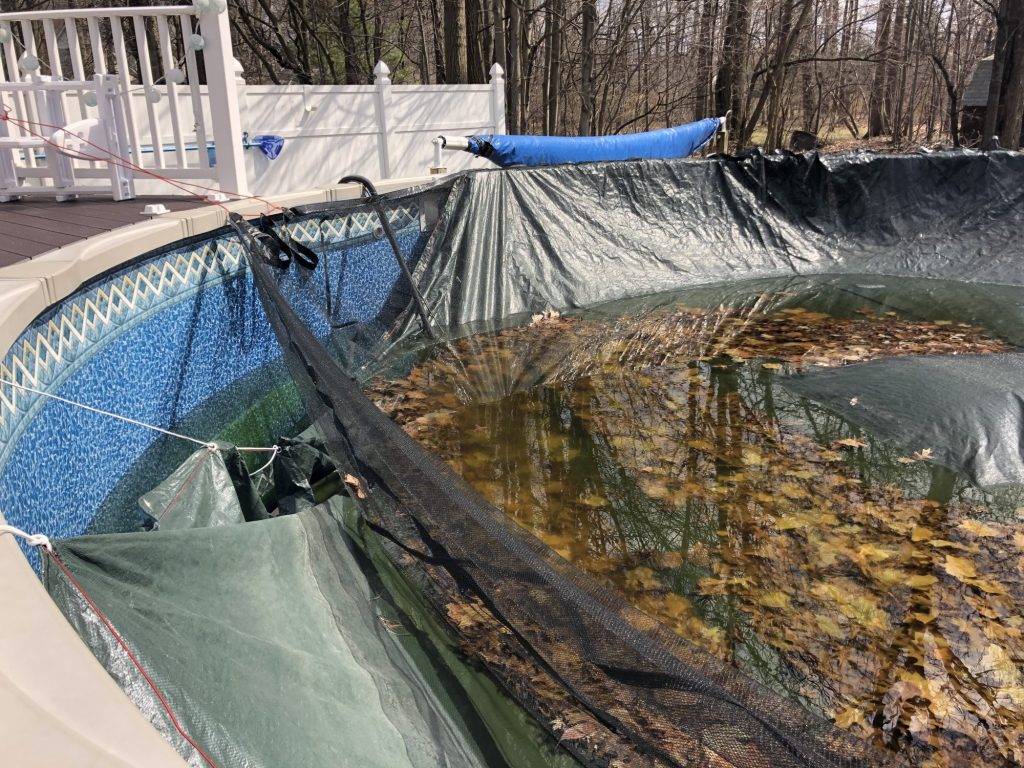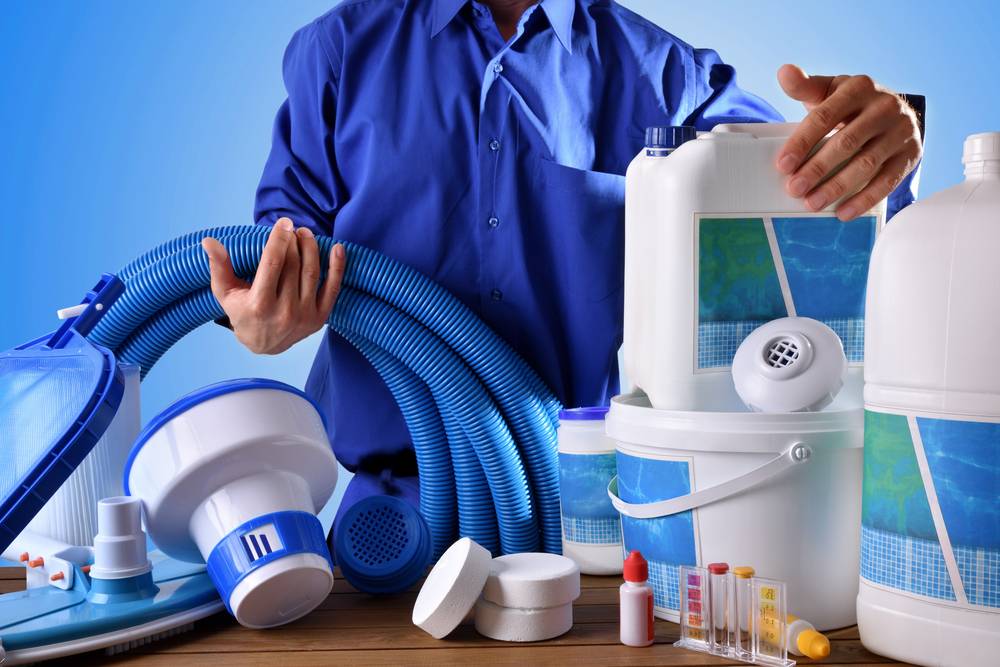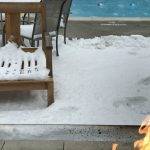Pulling off the pool cover with spring in the air is one of the most rewarding times of the year. Steps for a successful swimming pool start up relies heavily on locations so procedures may vary depending on your equipment. The steps below will help you when it comes time to open your pool this Spring. We’ll help you understand what start-up chemicals you’ll need for your swimming pool and many other simple to follow tips.
When should I open your pool?
Before we jump into that question, we’d like to suggest users do a few simple items in advance of the big day to help prepare for the swim season. While the pool cover is still on, users should take a few minutes and give their filters a good cleaning. In addition, users should remove any debris and pump water from winter cover if one has been used.
Now would be a good time to examine your equipment pad and complete any deferred maintenance tasks or make simple changes to your plumbing that will make pool maintenance easier. Consider adding cut off valves between the pool and the pump and on the return line if you don’t have them already. If you have a cartridge filter consider adding a waste line just after the pump.
When preparing for your pool opening keep a close eye on the weather. You want to open before the water hits 60° to help reduce the chance of opening to green water. Algae tends to grow much slower in cold water so opening early will help reduce the odds of having to fight algae.
Steps when opening your pool

Prior to opening your pool a leaf net may be installed to prevent debris build up on winter cover. Users will want to clean off any debris and drain any water from on top of your cover. Taking your time here can prevent making a mess in your water once the winter cover is removed. Once the cover is clean go ahead and remove it from the pool. If you have a safety cover you may find you’ll first have remove the anchor covers. When removing the cover it’s best to have help as the weight of the cover may get very heavy.
Once uncovered use a leaf rake or skimmer net to remove any leaves or other large debris in pool. Other debris, silt or sludge remaining on the bottom may be vacuumed or removed with a self-contained pool cleaner. Inspect skimmer, return, hoses, and any other components for hairline cracks, defects or other signs of excessive wear or damage. Remove any winterizing plugs or “gizmos” from the plumbing.
Fill the pool so that the water level is midway up the skimmer opening. Once all the plugs are removed and valves are open, water will passively enter the plumbing system. Open the air release valve on the filter if it has one and leave it open until a steady stream of water flows out of the air release valve. Close the air release valve and turn the pump on to push any remaining air out of the plumbing. If you have a DE filter recharge it with DE at this time. Reinstall any ladders and handrails that were removed for the winter. Run the pump for 30 minutes to mix the water before testing.
Swimming Pool Start-up Chemicals
Often stores will suggest users purchase start-up chemicals designed specially for your swimming pool, however it’s best to save you money. These are often contain some products the user doesn’t need along with some overpriced chlorine. Instead test water chemistry with an appropriate drops based test kit. The chemicals you’ll need upon opening your pool will always be based on your current levels.
Often users will have a chlorine level of zero. Adding chlorine right away is vital as having a zero chlorine level is an invite for algae to move in. Users will need to test their water; TA, pH, and CYA levels must be determined prior to adding chemicals to balance pool. Salt levels for owners of Salt Water Chlorine Generators (SWG) should also be determined with Salt Test Strips prior to the addition of chemicals and to establish the correct amount of replacement salt needed to properly operate the equipment.

Using the Pool Math program, determine the correct amounts of chlorine, CYA, acid or other chemicals needed and dose as instructed. You can find more details on proper chemistry levels for your pool in our ABC’s of Pool Water Guide. Lastly, many pool owners may open to green water and will need to “SLAM” the pool. This involves adding high doses of chlorine and running the pump 24/7 to kill any algae which may be present.
A few minutes a day of continued testing and adjusting chemistry levels as needed will get your water sparkling blue and you’ll be ready for a season of swimming fun. Opening your pool doesn’t need to be a difficult process, and we’re here to help you.





